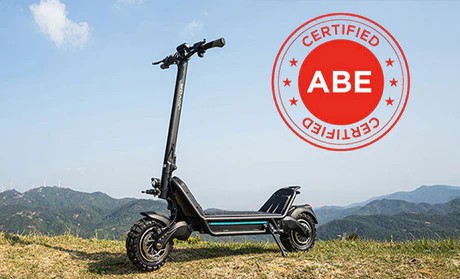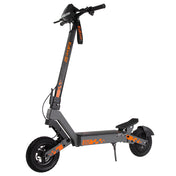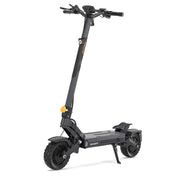Electric bikes, often referred to as e-bikes, electric bicycles, are revolutionizing the way people commute, exercise, and explore their surroundings. While their popularity is on the rise, there are still many aspects of electric bikes that remain relatively unknown to the general public. Let's delve into some lesser-known facts about these innovative modes of transportation.

Contents
- Introduction to Electric Bikes
- History of Electric Bikes
- Benefits of Electric Bikes
- Types of Electric Bikes
- How Electric Bikes Work
- Can Electric Bikes be used on the Road?
- Maintenance Tips for Electric Bikes
- Common Misconceptions about Electric Bikes
- Safety Considerations
- Environmental Impact of Electric Bikes
- Future Trends of Electric Bikes
- Electric Bikes Buying Guide
- Community and Events
- Electric Bike FAQs
- Conclusion
Introduction to Electric Bikes
Electric bikes are bicycles equipped with an electric motor to assist with propulsion. They blend the convenience of traditional bicycles with the efficiency of electric power, providing users with an enhanced riding experience. In recent years, the demand for electric bikes has surged, driven by a growing awareness of their benefits.

History of Electric Bikes
The concept of electric bikes dates back to the late 19th century when inventors began experimenting with battery-powered bicycles. However, it wasn't until the late 20th century that electric bikes gained traction, thanks to advancements in battery technology and motor efficiency. Today, electric bikes e-bikes have evolved into sophisticated vehicles with impressive performance capabilities.
Benefits of Electric Bikes
Electric bikes offer numerous advantages, including reducing carbon emissions, promoting physical activity, and saving money on transportation costs. By incorporating electric assistance, riders can tackle longer distances and steeper inclines with ease, making cycling accessible to a wider audience.

Types of Electric Bikes
There are various types of electric bikes tailored to different riding preferences and environments. From sleek city commuter bikes to rugged mountain electric bikes (e-MTBs) and space-saving folding models, there's an electric bike for every need and lifestyle.

How Electric Bikes Work
Electric bikes utilize a combination of electric motors and rechargeable batteries to assist with pedaling. Depending on the model, riders can choose between pedal-assist mode, where the motor provides assistance as the rider pedals, or throttle mode, where the motor engages with the push of a button or twist of a throttle.

Can Electric Bikes be used on the Road?
Sure. But it must comply with your local laws and regulations for electric bicycles or scooters. While electric bikes offer a convenient mode of transportation, it is important to understand local regulations and laws regarding their use. Speed limits, licensing requirements, and restrictions on where electric bikes can be ridden vary by region.
Maintenance Tips for Electric Bikes
Proper maintenance is key to ensuring the longevity and performance of an electric bike. Regularly charging the battery, keeping the drivetrain clean, and scheduling routine servicing can help prevent issues and prolong the lifespan of the bike.

Common Misconceptions about Electric Bikes
Despite their growing popularity, electric bikes are still subject to misconceptions. Contrary to popular belief, modern electric bikes boast impressive range capabilities, lightweight designs, and are available at various price points to suit different budgets.
Safety Considerations
Safety should always be a top priority when riding an electric bike. Wearing appropriate safety gear, such as helmets and reflective clothing, and practicing defensive riding techniques can help reduce the risk of accidents on the road. More articles on cycling safety are a must-read.

Environmental Impact of Electric Bikes
Switching to electric bikes can have a positive impact on the environment by reducing greenhouse gas emissions and promoting sustainable transportation alternatives. By choosing electric bikes over traditional vehicles, individuals can contribute to mitigating climate change and preserving natural resources
Future Trends of Electric Bikes
The future of electric bikes looks promising, with ongoing advancements in technology and design. From integrated smart features to improved battery efficiency, the next generation of electric bikes is poised to revolutionize urban mobility and redefine the way we commute.
Electric Bikes Buying Guide
When purchasing an electric bike, it's essential to consider factors such as budget, riding preferences, and intended use. Researching different models, comparing specifications, and taking test rides can help prospective buyers make informed decisions. Visit the OOLACTIVE Buying Guide here, or view the article: How Much is an Electric Bike

Community and Events
Joining electric bike communities and participating in events such as races and group rides can enhance the overall riding experience. Connecting with fellow enthusiasts provides opportunities to share knowledge, exchange tips, and explore new routes together.
Electric Bike FAQs
Are electric bikes legal on public roads?
Yes, electric bikes are generally legal on public roads, but regulations regarding speed limits and licensing requirements vary by jurisdiction. Much sold by OOLACTIVE is basically legal and can be used on the road.
How far can an electric bike travel on a single charge?
The range of an electric bike depends on various factors, including battery capacity, terrain, and riding conditions. Most electric bikes can travel anywhere from 20 to 80 miles on a single charge. Check out the buying guide for the longest range e-scooter here.
Do electric bikes require special maintenance?
While electric bikes require some maintenance, such as keeping the battery charged and ensuring the drivetrain is clean, they don't require significantly more upkeep than traditional bikes or bicycles.
Can I ride an electric bike in the rain?
Yes, electric bikes are designed to withstand inclement weather conditions, including rain. However, it's essential to take precautions to protect sensitive components, such as the battery and motor, from water damage. The electric bicycles and scooters sold by OOLACTIVE are certified as waterproof and dustproof, so you don’t have to worry about damage or danger.
Are electric bikes suitable for commuting long distances?
Yes, electric bikes are an excellent option for commuting long distances, as they provide assistance with pedaling and can help riders tackle challenging terrain more easily.

Conclusion
In conclusion, electric bikes offer a plethora of benefits that extend beyond conventional cycling. From reducing carbon emissions to promoting physical fitness and facilitating convenient urban commuting, electric bikes have the potential to transform the way we move. By debunking misconceptions and raising awareness of their advantages, we can encourage more people to embrace electric bikes as a viable transportation solution.














